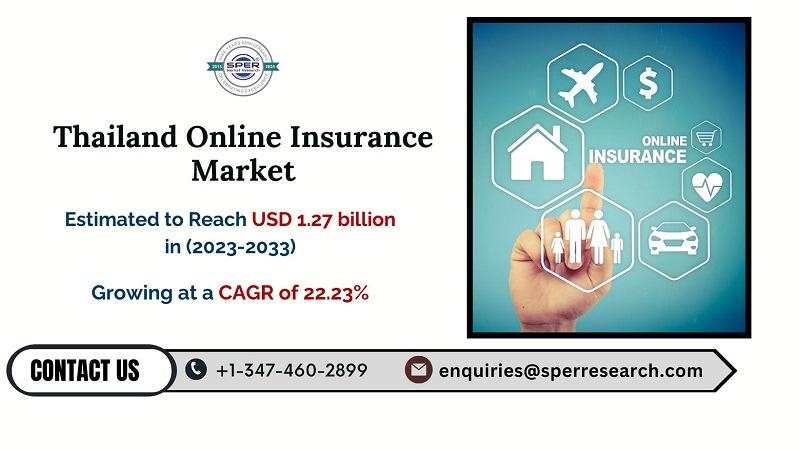Health insurance is a type of security that covers for medical and surgical costs sustained by the insured. It offers financial security by covering the cost of healthcare services such as doctor visits, hospital stays, prescription drugs, and preventive care. Depending on the policy, health insurance plans may include extra benefits such as mental health treatments, maternity care, and dental or vision coverage. Individuals or employers typically obtain health insurance, and the insured pays regular premiums. In the event of illness or injury, health insurance helps to reduce out-of-pocket expenses by paying a portion of medical costs. Access to health insurance is vital for maintaining overall well-being since it assures timely medical care and can reduce the financial burden of unexpected health issues.
According to SPER Market Research, ‘Europe Health Insurance Market Size- By Type, By Services, By Level of Coverage, By Service Providers, By Health Insurance Plans, By Demographics, By Coverage Type, By End User, By Distribution Channel- Regional Outlook, Competitive Strategies and Segment Forecast to 2034’ states that the Europe Health Insurance Market is estimated to reach USD 601.25 billion by 2034 with a CAGR of 6.29%.
As the European population ages, there is a greater demand for health services and insurance policies that address chronic illnesses and long-term care needs. Furthermore, growing concerns about rising healthcare costs and the strain on public healthcare systems are driving individuals and corporations to seek out private health insurance choices. The rising frequency of lifestyle-related disorders, such as obesity and diabetes, drives up need for comprehensive coverage that includes both preventive and treatment options. Furthermore, the European Union’s legislative environment, which prioritizes universal healthcare access and promotes a balance of public and private insurance options, is critical to market expansion.
The key problems are the differences in healthcare policies and regulations between European countries, which result in a lack of standardization in coverage, price, and services. Another key concern is rising healthcare costs, which are driven by an aging population and an increase in the prevalence of chronic diseases, putting a pressure on both public and private insurance systems. Furthermore, the growing tendency of people opting for basic or minimum coverage due to expensive premiums or financial constraints can lead to underinsurance, exposing them to considerable out-of-pocket payments. Finally, the intricate interaction between public and private insurance systems in many European nations frequently causes confusion and distrust.
The Netherlands has a strong presence in the European health insurance industry, owing to its highly efficient and accessible universal healthcare system. Some of the key players are – AIA Group Limited, Allianz Care, Anthem Insurance Companies, Inc., Assicurazioni Generali S.P.A., Aviva, AXA, Broadstone Corporate Benefits Limited.
Request a Free Sample Report: https://www.sperresearch.com/report-store/europe-health-insurance-market.aspx?sample=1
Europe Health Insurance Market Segmentation:
By Type: Based on the Type, Europe Health Insurance Market is segmented as; Product, Solutions.
By Services: Based on the Services, Europe Health Insurance Market is segmented as; Inpatient Treatment, Medical Assistance, Outpatient Treatment, Others.
By Level of Coverage: Based on the Level of Coverage, Europe Health Insurance Market is segmented as; Bronze, Gold, Platinum, Silver.
By Service Providers: Based on the Service Providers, Europe Health Insurance Market is segmented as; Private Health Insurance Providers, Public Health Insurance Providers.
By Health Insurance Plans: Based on the Health Insurance Plans, Europe Health Insurance Market is segmented as; Exclusive Provider Organization, Health Maintenance Organization, Health Savings Account, Indemnity Health Insurance, Point Of Service, Preferred Provider Organization, Qualified Small Employer Health Reimbursement Arrangements, Others.
By Demographics: Based on the Demographics, Europe Health Insurance Market is segmented as; Adults, Minors, Senior Citizens.
By Coverage Type: Based on the Coverage Type, Europe Health Insurance Market is segmented as; Lifetime Coverage, Term Coverage.
By End User: Based on the End User, Europe Health Insurance Market is segmented as; Corporate, Individuals, Others.
By Distribution Channel: Based on the Distribution Channel, Europe Health Insurance Market is segmented as; Clinics, Direct Sales, E-Commerce, Financial Institutions, Hospitals, Others.
By Region: The market for health insurance in Europe is dominated by Germany due to the country’s large consumer disposable income. Following closely after is the United Kingdom, which is anticipated to experience significant growth over the projected period as a result of rising corporate insurance demand in the area.
For More Information, refer to below link: –
Europe Health Insurance Market Growth
Related Reports:
Follow Us –
LinkedIn | Instagram | Facebook | Twitter
Contact Us:
Sara Lopes, Business Consultant — USA
SPER Market Research
enquiries@sperresearch.com
+1–347–460–2899









